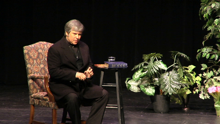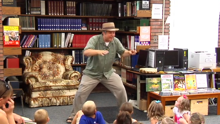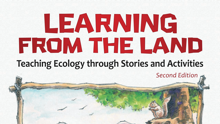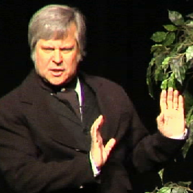Who? What? Where? The Prior Knowledge Quiz
by Brian "Fox" Ellis from Green Teacher Winter 2000
by Brian "Fox" Ellis from Green Teacher Winter 2000
Every story needs three main ingredients: characters, setting, and plot. The following questions will help your students gather their thoughts and collect the information they need to bring their stories to life. I use these questions to help students write a wide range of stories, from ecological adventures to historical fiction, ghost stories to fables.
Warn students that the questions will be asked at rapid-fire pace and you do not expect them to answer all of them. (It's a good idea to repeat the most important questions two or three times to be sure they are answered.) Many of the questions can be answered in one or two words and some will need a brief phrase or two, but complete sentences are not needed at this point. For questions they cannot answer, ask students to make up an answer or do a little research to find the correct answer. Together, these answers will become the raw materials for building their stories.
Characters
The big character question is who is in the story? Answer each of these questions for all of the characters:
What are their names? What do they look like? What kind of clothes do they wear? What color of skin, hair, and eyes do they have? Are there any scars, deformities, or unusual characteristics?
You can tell a lot about people by what they look like but don't stop there. How do they talk? What do they talk about? What tone of voice? You can tell a lot about people by what they say and how they say it. Take a minute and imagine a dialogue between two characters. What do they talk about?
What do they do? What kind of job do they have? What do they do for fun? What do they eat? What kinds of games do they play? What kinds of songs do they sing? Don't say they are nice or evil; show this through their behavior. You can tell a lot about people by what they do.
Setting
The big setting questions are where and when does the story take place? What country, what city? What kind of environment? What plants and animals live there? What type of weather do they have? If they are traveling, where are they coming from and going to? What does the landscape look like? Are there any mountains, rivers, hills, or valleys? How does the landscape change? What does their home look like? Of what is it made?
What time of day is it? What time of year? What time in history? Don't just say it was ten o'clock on a winter morning; show this in the details. How do you know what season or time of day it is? Use all of your senses. What do you smell? Hear? Feel? Is it moist or dry? Cold or hot? What is the emotional feeling of the place? Do the characters feel safe? Is it tense? Scary? Relaxed? How does this feeling change as the story changes?
Plot
The big plot question is what happens? The little question is: and then what happens, and then what happens, and then what happens?
What problems do people face in this environment? What problems do people have with the weather, storms, droughts, floods, or blizzards? What problems do people have with the plants, animals, or insects? What are the universal problems that people have always had, such as loneliness, jealousy, head-over-heels love, rage, rudeness, birth, death, separation? Make a list of possible problems. Next to each problem make a short list of possible solutions. If you were that person in that situation, what would you try to do to solve the problem? What do you learn from this experience? How does your character change because of this success or failure? How does this problem and its solution help to shape the landscape?
Make an outline of your plot. What happens first? Where is a good place to start? And then what happens? What problem do your characters face? How do they respond? Maybe they try but fail the first time. What happens next? How do they succeed? How does your story end?









